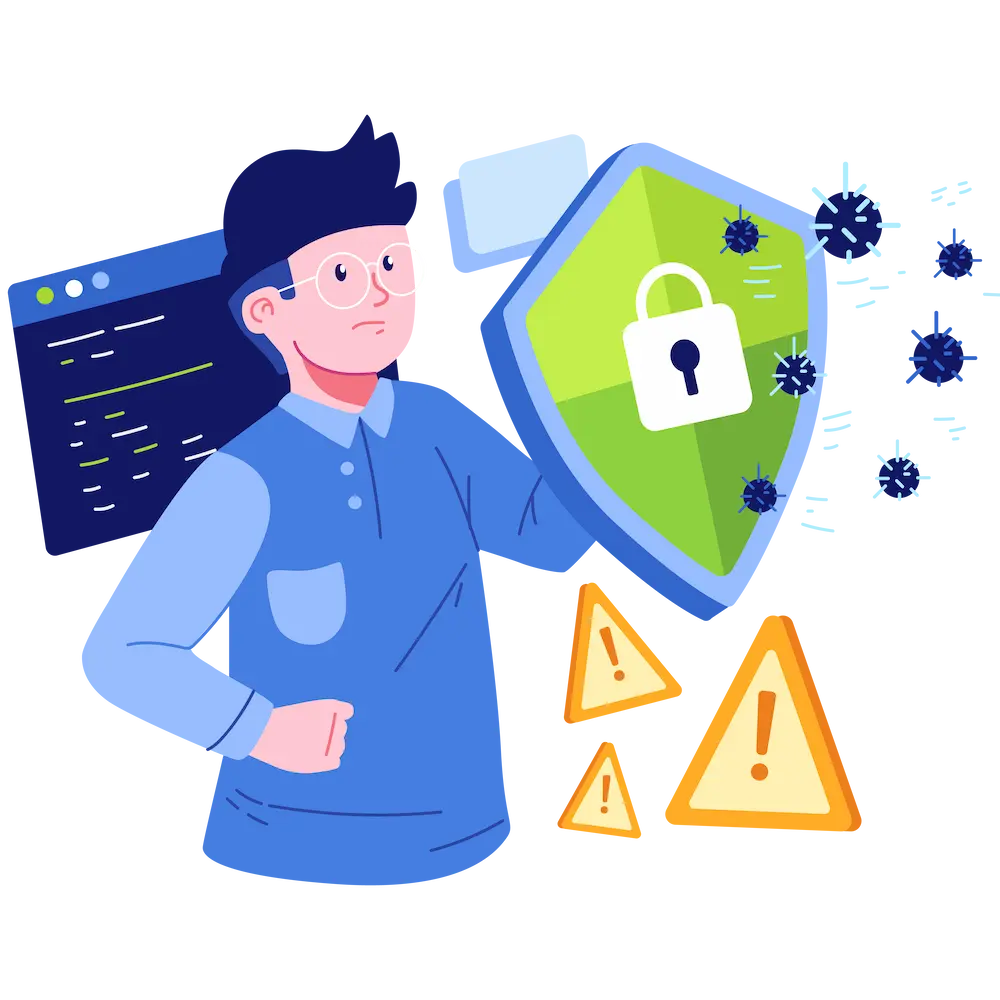5 Cybersecurity Tips Every Small Business Should Implement

Introduction
Cybersecurity threats are a growing concern for businesses of all sizes, but small businesses are particularly vulnerable. According to recent studies, 43% of cyber attacks target small businesses, yet only 14% are prepared to defend themselves. The consequences of a data breach can be devastating, including financial losses, damaged reputation, and even business closure.
The good news is that implementing basic security measures can significantly reduce your risk. In this article, we'll share five essential cybersecurity tips that every small business should implement to protect their data and systems from increasingly sophisticated cyber threats.
Tip 1: Use Strong, Unique Passwords and Multi-Factor Authentication
Weak passwords remain one of the most common entry points for cybercriminals. Strengthen your defenses with robust password policies and multi-factor authentication.
Passwords are often the first line of defense against unauthorized access to your systems and data. Unfortunately, many small businesses still use weak, easily guessable passwords or reuse the same password across multiple accounts.
To improve your password security:
- Require complex passwords that include a mix of uppercase and lowercase letters, numbers, and special characters
- Implement a minimum password length of at least 12 characters
- Ensure that employees use unique passwords for different accounts
- Consider using a password manager to generate and store strong passwords securely
- Change passwords regularly, especially for administrative accounts
While strong passwords are important, they're not enough on their own. Multi-factor authentication (MFA) adds an extra layer of security by requiring users to provide two or more verification factors to gain access to a resource. This typically includes something you know (password), something you have (a mobile device or security key), or something you are (biometric verification).
Implementing MFA can prevent 99.9% of account compromise attacks, making it one of the most effective security measures you can implement.
Tip 2: Keep Software and Systems Updated
Software updates aren't just about new features—they often include critical security patches that protect against known vulnerabilities.
Outdated software and operating systems are prime targets for cybercriminals who exploit known vulnerabilities that have been fixed in newer versions. Keeping all your software up to date is a simple yet effective way to protect your business.
To maintain updated systems:
- Enable automatic updates whenever possible for operating systems, applications, and firmware
- Create a schedule for regularly checking and applying updates that can't be automated
- Maintain an inventory of all software and hardware to ensure nothing is overlooked
- Test updates in a non-production environment before deploying them widely, if possible
- Consider using patch management software to streamline the update process
Remember that outdated software isn't just a security risk—it can also lead to compatibility issues, reduced performance, and lack of support when problems arise.
Tip 3: Train Your Employees on Security Awareness
Your employees can be your strongest security asset or your greatest vulnerability. Regular training helps ensure they're part of your defense, not an entry point for attacks.
Human error is involved in more than 95% of all security breaches. Phishing attacks, weak passwords, and inadvertent data exposure are common ways that employees can unintentionally compromise your business's security.
An effective security awareness training program should cover:
- How to identify and report phishing attempts
- Safe browsing and email practices
- Password security and the importance of MFA
- Data handling procedures and privacy requirements
- Social engineering tactics and how to resist them
- Mobile device security and safe remote work practices
Training shouldn't be a one-time event. Regular refreshers, simulated phishing exercises, and updates on new threats help keep security top of mind for your team. Consider making security awareness part of your onboarding process for new employees and providing ongoing education for all staff.
Tip 4: Implement Regular Backups and Test Recovery
Even with strong preventive measures, security incidents can still occur. Regular backups ensure you can recover quickly and minimize damage.
Data backups are your insurance policy against ransomware, hardware failure, human error, and other threats that could result in data loss. A robust backup strategy is essential for business continuity and disaster recovery.
Follow these best practices for effective backups:
- Implement the 3-2-1 backup rule: maintain at least three copies of your data, store two backup copies on different storage media, and keep one copy offsite
- Automate your backup process to ensure consistency
- Encrypt backup data to protect it from unauthorized access
- Regularly test your backups by performing recovery exercises
- Document your backup and recovery procedures
Cloud-based backup solutions offer advantages for many small businesses, including offsite storage, automatic versioning, and easy scalability. However, it's important to understand the security measures and service level agreements provided by your cloud backup provider.
Remember that having backups is only half the solution—you must also verify that you can successfully restore from those backups when needed.
Tip 5: Develop and Practice an Incident Response Plan
Despite your best preventive efforts, security incidents can still occur. Having a plan in place helps you respond quickly and effectively.
An incident response plan outlines the steps your organization will take when a security incident occurs. Having a well-documented plan helps minimize damage, reduce recovery time and costs, and fulfill any legal or regulatory reporting requirements.
Your incident response plan should include:
- Roles and responsibilities for team members during an incident
- Contact information for internal and external resources (IT support, legal counsel, law enforcement, etc.)
- Steps for identifying, containing, eradicating, and recovering from different types of incidents
- Communication templates and protocols for notifying affected parties
- Documentation requirements for the incident and response actions
- Post-incident analysis procedures to prevent similar incidents in the future
Once you've developed your plan, it's crucial to practice it through tabletop exercises or simulations. These practice runs help identify gaps in your plan and ensure that everyone knows their responsibilities during an actual incident.
Conclusion
Cybersecurity doesn't have to be overwhelming for small businesses. By implementing these five essential security measures—strong passwords and MFA, regular software updates, employee training, data backups, and an incident response plan—you can significantly reduce your risk of a successful cyber attack.
Remember that cybersecurity is not a one-time project but an ongoing process. Regularly review and update your security measures to address new threats and changes in your business.
At Tek4, we help small businesses in St. Louis implement effective cybersecurity measures tailored to their specific needs and budget. If you need assistance with any aspect of your cybersecurity strategy, contact us today for a consultation.
Need help implementing these cybersecurity measures?
Contact Tek4 today to discuss how we can help protect your business from cyber threats.
